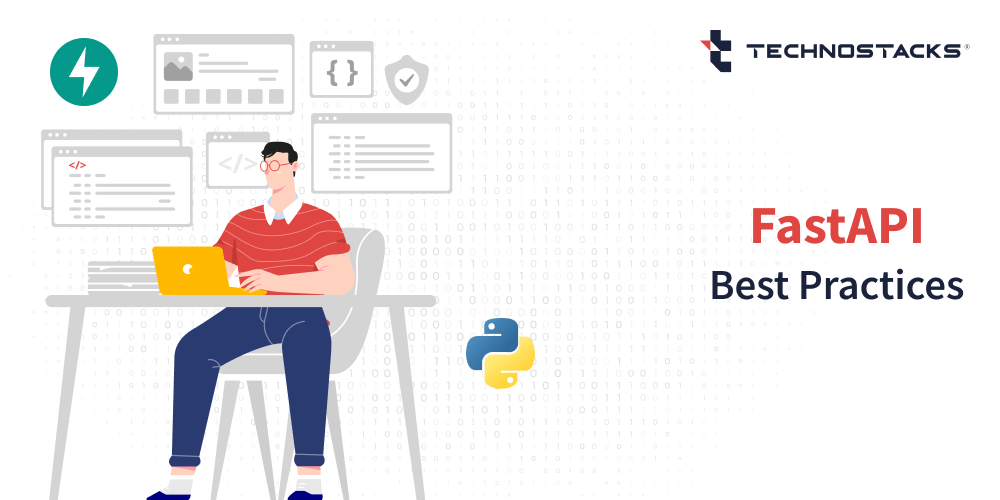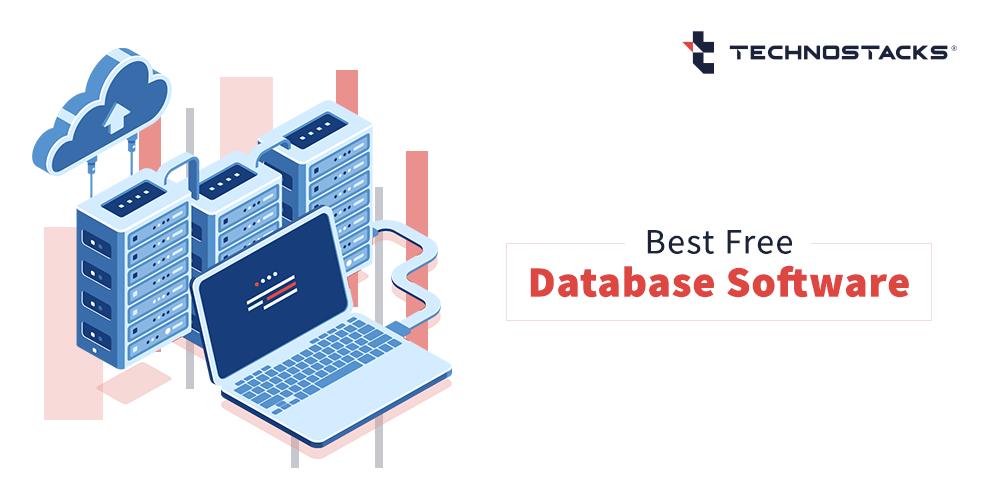Mastering FastAPI: A Comprehensive Guide and Best Practices
FastAPI has quickly become a favorite among developers due to its simplicity, efficiency, and ability to handle thousands of requests per second. Leveraging the Starlette and Pydantic libraries, FastAPI excels in low-latency processing, asynchronous programming, and minimizing overhead.
With an emphasis on speed, scalability, and developer-friendly features, FastAPI proves to be a robust choice for creating elegant and efficient APIs in Python.
This comprehensive guide covers the basics of FastAPI, its core concepts, building blocks, advanced features, performance optimization, testing, documentation, deployment strategies, best practices, and insights into its growing community.
What is FastAPI?
FastAPI is a very modern web framework to easily build APIs with Python 3.8+ based on standard Python-type hints. It is known for speed, elegance, and innovation, and in no time has very much become favored by developers looking to piece together high-performance APIs. FastAPI has built-in ease of use, a simple syntax that makes it developer-friendly to users of every level of knowledge and can be used at a very fast pace.
One of the key features of FastAPI is the speed. Mentioned among the fastest Python frameworks, FastAPI thanks to the Starlette and Pydantic libraries. Therefore, it becomes possible to attain low-latency processing capable of processing thousands of requests in a second, hence rendering it one of the best for creating an API of high performance. FastAPI speed is built on efficient code generation, asynchronous programming, and a focus on minimizing overhead.
Another key point about FastAPI is that it’s elegant. It is easy to use and understand, thanks to its clean, well-structured, and clear styles of writing and maintaining code. It also comes with a variety of features and tools that make it easy to build even sophisticated APIs; this includes support for request validation, automatically generated documentation for your API, and many more. Simple and easy to use, FastAPI is an amazing choice for developers to make their APIs elegant and efficient.
Getting Started with FastAPI
Getting started with FastAPI is a seamless process that begins with a straightforward installation. Once installed, the framework allows developers to swiftly create APIs by leveraging the power of Python’s type hints to define data types, request parameters, and responses. This results in automatic validation, serialization, and documentation generation, reducing errors and enhancing code maintainability.
This overview will guide you through the installation process, and the creation of your first API, and provide examples to illustrate the simplicity and power of FastAPI in developing modern web APIs.
Installation and Setup
Before you start working with FastAPI, you need to install it. The FastAPI works with Python 3.6 version and higher; therefore, on your system, you should have this version installed. You can check the Python documentation version from here.
To install FastAPI, a Python package manager called pip is used. To install using pip, you just have to open your terminal or command prompt and run the following command:
pip install fastapi
This installs FastAPI and all the required dependencies. After the installation, one can commence using FastAPI in projects.
Creating Your First API
The FastAPI framework is all about fast development, so to create your first API with it, just define a new file in Python and import the class of FastAPI from the fast API module to your Python file. After creating a new instance of the FastAPI class, specify your API endpoints.
Here’s an example of a simple FastAPI application:
from fast API import FastAPI
app = FastAPI()
@app.get("/")
async def root():
return {"message": "Hello World"}
In this example, we create a new instance of the FastAPI class and define exactly one endpoint which will respond to HTTP GET requests on the root path (‘/’). This endpoint returns a JSON object with the ‘message’ key and the value ‘Hello World’.
Something like the web server, Uvicorn can run your FastAPI application. Install it with the following command:
pip install uvicorn
And then start the web server with
uvicorn main:app --reload
This will start the web server, and the FastAPI application is available at http://localhost:8000/.
Now, test your API either by navigating your web browser to the URL in the address bar or by using an available tool like cURL.
And that’s it! You’ve just built your first API with FastAPI. Thanks to the flexibility FastAPI offers and its super-intuitive syntax, this is how even complex APIs are developed.
Read More:- Reasons Why Choose Python As Your Next Web Project
Core Concepts
The core concepts of FastAPI encapsulate its design philosophy, integration with the Starlette framework, and seamless collaboration with Pydantic.
Design Philosophy
FastAPI is built on top of the Starlette framework, a web framework for routing and middleware implementation. FastAPI was designed to be easy and user-friendly in such a way that even a person who uses it can develop highly powerful APIs, while performant and extensible.
Modern Python is widely used, featuring its async and await, in addition to type hints and data validation.
The Starlette Framework
Starlette framework is built to be a lightweight and highly performant web framework that FastAPI stands on. It is a lightweight and highly performant Starlette interface to build web applications and APIs.
Starlette is optimized for speed, asynchronous, and most important of all, scalable—a reason for adoption to build high-performance APIs.
Pydantic Integration
FastAPI is a collaboration partner to Pydantic. Pydantic is among the most advanced libraries developed for Python. It is rather ergonomic and handy in using for serializing data and validation of the data. For this ability, it becomes the best fit for FastAPI as an API builder.
FastAPI itself uses Pydantic for request validation on the fly and as a means of automatic generation of OpenAPI documentation.
It is the core concepts underlying FastAPI that confer power and flexibility as a web framework for API development. With modern Python features and powerful libraries such as Starlette and Pydantic, FastAPI wants to bring an easy-to-use, highly intuitive way of implementing APIs, that is both high-performance and scalable.
Read More:- Why Should You Choose Python for Machine Learning?
Building Blocks
The building blocks of FastAPI form the foundational elements that empower developers to construct robust and efficient APIs. These building blocks not only enhances the structure and maintainability of the code but also enables the development of powerful and secure APIs with FastAPI.
Routing
Routing is the process of creating a link between a URL path and a certain function within your code. In FastAPI, this route definition would be somewhat like @app.route(). This decorator takes a URL pattern as its argument and associates it with a function that is going to handle the requests to that URL.
FastAPI has support for dynamic routes, where you define a URL route for passing parameters dynamically. This makes it easy to create APIs with a flexible and intuitive URL structure.
Dependency Injection
With a design pattern of dependency injection, one can inject functions that he or she makes; it, therefore, will not have hard-coded dependencies in his or her code. It makes code more modular and easy to test.
FastAPI has built-in support for dependency injection through the use of its companion function, Depends. This function is used to declare dependencies in your functions, and FastAPI automatically injects them while the function is called.
Security and Authentication
Security and authentication stand out as important considerations in the case of any API. FastAPI has a bunch of built-in tools to help the user secure their API. This includes support for OAuth2 and JWT authentication out of the box. It also supports rate limits out of the box, which can be very helpful for protecting your API from abuses.
In other words, FastAPI gives a set of powerful building blocks that allow the easy creation of fast, effective, and safe APIs. With them, you can construct APIs that are easily maintained, tested, and extensible.
Read More:- Top Checklist to Hire Python Developers
Advanced Features
FastAPI has a few powerful features that make it different from other Python web frameworks. Let’s discuss it.
Database Integration
FastAPI already comes with native support for various databases such as PostgreSQL, MySQL, SQLite, and MongoDB, among others. It is much easier to link a database to handle CRUD (Create, Read, Update, Delete) operations without writing a lot of boilerplate code.
One of the things FastAPI does is use the Object Relational Mapping (ORM) system provided by SQLAlchemy, which allows an individual to work with databases in an object-oriented way in a more intuitive manner.
SQLAlchemy provides a wide number of high-level utilities that include connection pooling, transaction management, and optimization of queries.
Asynchronous Programming
FastAPI is built on top of the Starlette framework, designed to be highly performant and to handle concurrency using an async programming approach. This implies that FastAPI can service multiple requests concurrently without blocking the event loop.
FastAPI uses async/await syntax that makes it easy to write asynchronous code but keeps it very readable and maintainable, allowing developers to write elegant yet fast code.
Middleware Implementation
The FastAPI middleware system helps developers enable making changes to both the request and response objects before they are taken up for further processing by the main application. This may help in the development of the functionality for authentication, logging, and error handling, among others.
A middleware function is defined as a function that takes a request and is callable. This request object is used to carry data around, so its content may be changed as needed, with the callable being used to invoke the next middleware function in the chain.
On the whole, FastAPI, with the advanced features available in it, is a recommendation for a power tool to build high-performance APIs. The support it contains for databases, asynchronous programming, and implementation of middleware all confirm it to be a good choice for developers who would like to build fast, elegant, and innovative applications.
Performance Optimization
Performance optimization is a key consideration in the development of any robust web application, and FastAPI provides developers with powerful tools to enhance the speed and efficiency of their APIs.
By using caching, concurrency, and scaling strategies, developers can fine-tune their FastAPI applications to deliver optimal performance, providing users with a responsive and reliable experience.
Caching Strategies
Caching is one of the ways by which to improve performance in your APIs in that it reduces the number of requests that need to be made to the server. FastAPI supports a few caching strategies out of the box, such as in-memory caching, Redis caching, and Memcached caching.
Such a kind of strategy is one very simple in-memory caching strategy in that it just involves holding the data inside the server in the application’s memory. Such kind of caching strategy could be beneficial when deployed for simple applications, but may not fit well with larger applications where more sophisticated caching strategies are required.
Some caching techniques popular with applications like working with data stored in a Redis database are Redis caching. Redis is a very fast in-memory data store that is particularly useful in the case of caching frequent access data. Hence, it will be applicable, especially for applications that require a high degree of concurrency or that are scaling out horizontally.
Caching in Memcached is of the distributed memory type, in which storage uses in-memory key-value pairs. This is a high-performance in-memory caching store that caches frequently accessed data. In doing so, it makes Memcached very appropriate for high-concurrency applications as well as scaling out applications.
Concurrency and Scaling
FastAPI has been designed to scale up to the greatest concurrencies in supporting many requests. Nevertheless, there are still ways to optimize the performance of your FastAPI applications about concurrency and scaling.
Asynchronous programming is one of the ways to optimize the performance of your FastAPI applications. So, FastAPI supports asynchronous programming using the keywords `async` and `await`. This will be very useful in applications needing high levels of concurrency and, likewise, in horizontally scaling them up.
Other than the above tips provided, another way of optimizing your FastAPI applications would be through load balancing. Load balancing refers to the distribution of incoming network traffic across servers in a certain manner that aims at the attainment of optimal resource utilization. This helps enhance the performance of your APIs by relieving the load of individual servers and making it possible to increase the horizontal scaling of your application.
To conclude, that would be speeding up your FastAPI applications with caching strategies, asynchronous programming, and load balancing in place. In conclusion, based on the outlined strategies above, your FastAPI apps could be super-fast and able to handle even more traffic and concurrency.
Read More:- Reasons to Choose Django For Web Development
Testing and Documentation
Testing and documentation are integral aspects of the development lifecycle, and FastAPI simplifies these processes, ensuring robust and well-documented APIs. This comprehensive approach to testing and documentation in FastAPI enhances the overall development experience, fostering code reliability and effective communication within development teams.
Automated Testing
Writing automatic tests for your API is easy with FastAPI, following the standard Python test frameworks such as pytest. You can create a TestClient in which you pass your FastAPI application; and then write functions, with names beginning with test_ (this is following standard pytest conventions). You can make HTTP requests to your API by using a TestClient object and writing simple assert statements to check your results using standard Python expressions.
FastAPI supports automated testing. Therefore, this provides a guarantee to catch any bugs and regression ahead of development being done, hence the expected API is always reliable and does what it should.
API Documentation with Swagger
FastAPI brings you automatic API documentation in agreement with the OpenAPI (previously Swagger) standard. That means automatically generating interactive documentation, which has humanly and machinely readable descriptions for your API.
FastAPI creates documentation for you, deducing the structure of your API from type hints and function signatures. You can enrich this with further descriptions and examples.
Deployment
Deployment allows developers to grasp and use your API and always have your API up-to-date and correct.
FastAPI is not only fast and elegant, but it’s easily deployable. This section discusses two very popular and well-known ways to deploy: through containers and orchestration and also serverless deployment.
Containers and Orchestration
The popular and more known way of deploying a FastAPI application is with containers. Containers are very light in weight and are portable, with some even being able to be used in a constant environment. Docker is the commonest known container platform, which is in use in the industry. FastAPI applications can be easily containerized using Docker and then deployed to any platform that supports Docker.
The orchestration tools like Kubernetes, Docker Swarm, and Amazon ECS can, therefore, be used in the handling and deployment of containers at scale. Some of these tools bring in several features such as load balancing, auto-scaling, and service discovery which gives room for simplified deployment and management of the containers.
Serverless Deployment
Another is the serverless deployment of FastAPI applications. Serverless computing refers to the execution of applications without bothering about the underlying infrastructure by the developers. It can be deployed to serverless platforms like AWS Lambda, Google Cloud Functions, and Azure Functions.
Serverless deployment is cost-efficient as it only charges for the resources consumed by an app. It is a deployment method where auto-scaling is allowed and creates a highly available environment. However serverless deployment is limited where some use cases may not fit.
In summary, FastAPI easily supports deployment. FastAPI applications can be deployed with containers and orchestration, and also with serverless deployment. That provides developers with options in which they can best deploy.
Fast API Best Practices
FastAPI best practices are a set of guidelines that help create top-notch APIs. Start by using Python type hints for data validation and serialization to keep your code clear and generate documentation automatically. Take advantage of FastAPI’s support for asynchronous programming, optimizing your API’s performance by efficiently handling concurrent requests. Embrace dependency injection to keep your code modular and organized, making development and testing more straightforward.
A well-structured project layout, with logically grouped endpoints and dependencies, enhances scalability and maintainability. Prioritize security by implementing measures like input validation and authentication to protect against potential vulnerabilities.
Adopt a robust testing strategy, preferably with tools like Pytest, to catch and address issues early in the development process, ensuring a reliable codebase. By following these practices, you can harness FastAPI’s capabilities to build secure, efficient, and maintainable APIs.
1 .Code Structuring
Structuring the code and keeping it organized are some very important steps to take when developing a project based on FastAPI. This is, first of all, meaning modular, reusable, and easy to understand. Below are some tips for the structure of code while working on the FastAPI application.
Modular architecture: Design and implement your code in a modular architecture, separating it into several modules that can easily be reused anywhere in your project.
Single Responsibility Principle (SRP): It’s also essential that any module, class, or function in your code follows the single responsibility principle.
Consider good naming conventions. This means that the names provided for the variables, functions, and classes will be very understandable and maintainable. Use one style of coding in your entire project so that the code will be easy to read and understand.
2. Error Handling
One more central constituent for a project with the help of FastAPI is error handling, where usually mistakes are made. This indicates that you will need to envisage and handle errors so that they come out user-friendly and secure.
Below are the strategies used for handling errors in FastAPI:
- Using HTTP Status Code:
Use an HTTP status code to indicate the condition of a request. For instance, use 200 to indicate a success condition, 400 to indicate a bad request, and 500 for the occurrence of an internal server error.
- Handle exceptions in FastAPI:
FastAPI provides an easy way to handle exceptions using the class HTTPException. Use this class to return user-friendly error messages.
- Logging of errors:
In the application, it is supposed that errors may occur, so at least logging into a file or database should be considered to diagnose the issue and apply a fix.
- Secure error handling:
Always make sure that the error messages don’t disclose much of your application or its users’ information.
With all the above-mentioned best practices, it will ensure that a project developed using FastAPI is also scalable, maintainable, and secure.
3. Python Type Hints
Embrace Python type hints not only for their role in data validation but also for improved documentation generation. FastAPI leverages these hints to automatically create comprehensive API documentation, making the codebase more understandable for both developers and users.
4. Asynchronous Programming
FastAPI’s support for asynchronous programming is a key feature for handling concurrent requests efficiently. This allows the server to process multiple requests simultaneously, enhancing the API’s responsiveness and overall performance.
5. Dependency Injection
Efficiently utilize dependency injection in FastAPI to manage dependencies, resulting in cleaner and more modular code. This practice enhances code organization and readability while making it easier to test and maintain.
6. Project Structure
Organize the project with a thoughtful structure, grouping related endpoints and dependencies logically. This approach improves code maintainability, scalability, and fosters a more intuitive development process.
7. Security Measures
Prioritize security by implementing measures such as input validation, authentication, and authorization. By addressing potential vulnerabilities early in the development process, developers can create APIs that are resilient and protect against common security threats.
8. Testing Strategy
Adopt a comprehensive testing strategy using tools like Pytest to verify the functionality and reliability of the code. Thorough testing helps catch potential issues early on, ensuring a more stable and robust codebase throughout the development lifecycle.
Community and Contributions
One point to note is that FastAPI is developed as an open-source project, and the number of both its contributors and users keeps growing. Its code can be found on GitHub, so it’s possible to report issues, suggest new features, and issue pull requests.
Contributing to FastAPI
Contributing to FastAPI is easy and highly encouraged. The project loves all kinds of contributions: from code, through documentation, to bug reports. The FastAPI team has provided an extensive contribution guide to the project, in which guidelines for pull requests and code reviews are included.
Users are also encouraged to provide contributions such as submitting bug reports and feature requests. Here, an individual may submit issues to the GitHub page of the project which will be reviewed and issues addressed as early as possible.
Community Resources
FastAPI enjoys a rapidly growing community of users who are eager to share their knowledge and expertise. There is an official FastAPI Forum for the project, which serves as an excellent platform for users to get help for Fast API, ask questions, share tips and tricks, and interact with other users of FastAPI.
FastAPI users can also access other resources on the official forum such as blogs, tutorials, and videos that discuss the various features of FastAPI development.
Moreover, many third-party libraries and tools, which have been developed by the community, are available for FastAPI. Specifically, they are plugins for popular development tools such as Visual Studio Code and PyCharm, libraries for work with databases, authentication, and the like.
To summarize, the FastAPI community is of the view that the main objective is to get the maximum benefit of this framework for its users and that it is continuously looking for better ways to improve the project. Whether you are an experienced developer or you are just starting your feet in FastAPI, in both cases, you have an enormous wealth of resources to help you succeed.
Elevate Your Projects with Technostacks
At Technostacks, we take pride in being a top-tier Python development company, dedicated to crafting solutions that align seamlessly with the dynamic needs of modern businesses. With a wealth of experience, we specialize in developing high-performance applications using FastAPI. Our skilled team is adept at unlocking the full potential of FastAPI, ensuring the smooth development of robust APIs that prioritize speed, efficiency, and security. If you’re dreaming of top-notch applications built with Python and FastAPI, look no further than Technostacks. We’re your reliable partner, committed to bringing innovation and excellence to every project. With a proven track record, we stand ready to transform your ideas into reality.
Get in touch with us today and let Technostacks elevate your vision with our expertise in Python and FastAPI development services.
Conclusion
This comprehensive guide has provided a thorough exploration of FastAPI, highlighting its key features, core concepts, building blocks, advanced functionalities, performance optimization strategies, testing and documentation practices, deployment options, best practices, and insights into its growing community.
FastAPI has quickly emerged as a favorite among developers, offering a perfect blend of simplicity, efficiency, and high-performance capabilities. Its emphasis on modern Python features, asynchronous programming, and integration with libraries like Starlette and Pydantic makes it a robust choice for API development.
By following best practices, structuring code effectively, embracing type hints, leveraging asynchronous programming, and prioritizing security measures, developers can harness the full potential of FastAPI to build secure, efficient, and maintainable APIs.
The active and growing FastAPI community, along with its open-source nature, provides a supportive environment for collaboration, contributions, and continuous improvement. As the development landscape evolves, FastAPI stands out as a powerful tool for crafting elegant and high-performance APIs in Python, with Technostacks positioned as a reliable partner for those looking to elevate their projects with expertise in FastAPI development.
FAQ
1. How does FastAPI compare to Flask and Django in terms of performance?
FastAPI performs better than both Flask and Django. This is because FastAPI is asynchronous and uses Pydantic to validate data. It is built over Starlette, a high-performance web framework for async and I/O-bound applications. Flask and Django are synchronous; therefore, in serving many requests, they won’t be as fast as FastAPI.
2. What FastAPI is used for?
FastAPI is a web framework for building APIs with Python 3.7 and above. It is specifically designed to make API development fast, efficient, and secure. Developers use FastAPI to create robust and high-performance APIs, leveraging modern Python features such as type hints for automatic data validation and documentation generation. Its asynchronous capabilities enable the handling of concurrent requests, making it suitable for applications with high traffic or demanding performance requirements.
FastAPI is often chosen for its simplicity, productivity, and the seamless integration of tools like Pydantic for data validation and Swagger UI for automatic API documentation. Whether building RESTful APIs, microservices, or web applications, FastAPI serves as a powerful and versatile tool, allowing developers to focus on their application logic while ensuring scalability, security, and ease of maintenance in their API projects.
3. What are the best practices for deploying FastAPI with Uvicorn?
FastAPI recommends using an ASGI server, Uvicorn. Best practices, when using Uvicorn, for a FastAPI-based application deployed include using Uvicorn behind a reverse proxy server, for example, Nginx or Apache; using a process manager, for example, Systemd or Supervisor, for the management of Uvicorn processes; and setting Uvicorn to work with a matching count of workers and several CPU cores.
4. Can FastAPI be considered a suitable choice for large-scale projects?
Yes, FastAPI can be considered when selecting a framework to implement a big project. With its async-based high performance, it fits to deal with a large number of requests. Furthermore, when Pydantic is integrated to validate data and automate API documentation, it will be easy to maintain and upscale in the future.
5. What potential drawbacks should one be aware of when using FastAPI?
A con that could be observed when using FastAPI is that its learning curve may be higher compared to other Python web frameworks due to its async programming and usage of type annotation. Furthermore, it may not be suitable for simple small projects as it’s meant for high performance and scalability.
6. How well does FastAPI facilitate the development of microservices?
FastAPI has a core based on asynchronous, allowing it to be high-performance and auto-generate API documentation for your applications. It also integrated built-in support for OpenAPI and JSON Schema documentation, which can be useful for microservice architectures. Besides, Pydantic used for validation is a great aspect to assure that the microservices remain well-designed and consistent.
7. What makes FastAPI so fast?
FastAPI was built using high-performance libraries such as Pydantic and Uvicorn so that they can explode at incredibly fast speeds, and work well with high loads. This provides a simple API that is highly usable and easy to understand.
8. Is FastAPI enough for backend?
While Flask was developed for the prototyping of new applications and ideas, FastAPI was developed with the idea of building APIs. With it, there are a lot of opportunities to quickly develop a backend server with no coding.
9. Is FastAPI better than Django?
When it comes to performance, fastAPI is the thing next to Django, which is, let’s say, not lightning-quick. Community: Django has the biggest community among all of them, mainly due to its wide usage and popularity. FastAPI, on the other hand, has a small community, because it’s relatively new.
10. What are the disadvantages of FastAPI?
There is a learning curve with FastAPI, specifically for users not used to Python-type annotations or asynchronous programming. The learning may be sharp during the first learning process and not very easy to get used to in understanding and correctly using these functions.








